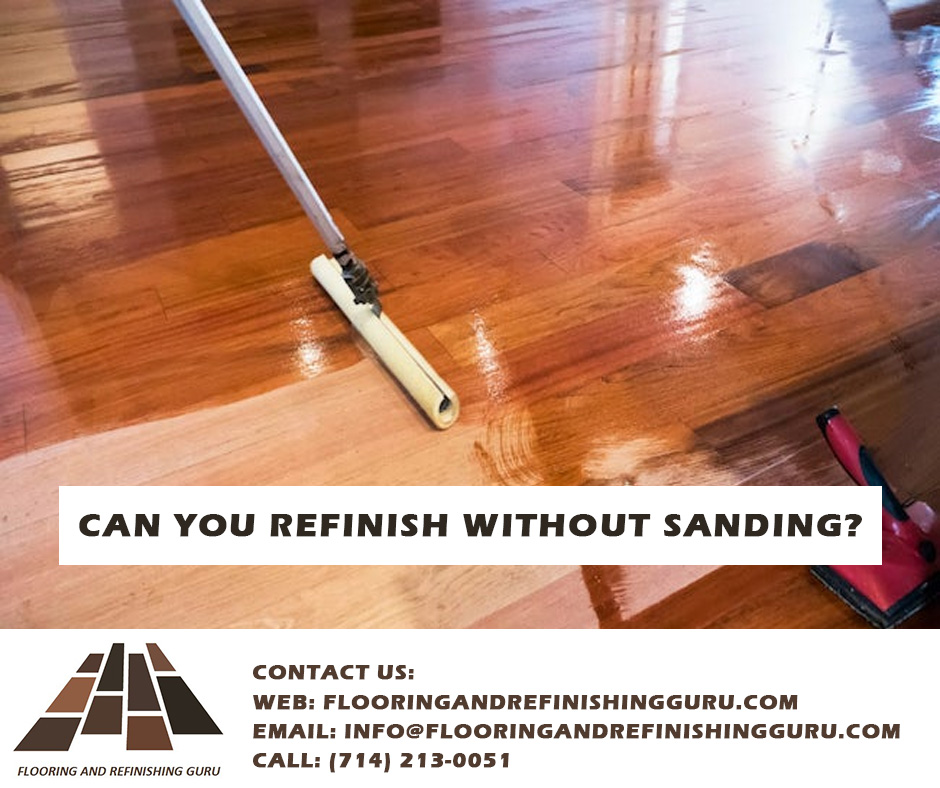
Refinishing wood without sanding is a possibility; homeowners and proprietors can opt for various alternates (mineral paints, chalk paints, bonding primer, liquid deglosser, etc.) to manage the interior décor. Sanding is also necessary; it helps remove the old finish, smooth the surface, and get the wood ready for a new finish. However, the process is long and tiring.
Let’s discuss some common refinishing techniques preferred by experts.
Read More
Which Kind of Floors can be Refinished?
What’s the Difference Between Resurfacing and Refinishing?
How to Check the Durability of Hardwood Floors for Refinishing?
Chemical Stripping
Chemical strippers are intended to dissolve and soften applied finishes. These substances are available in liquids, gels, and pastes. Heat guns, putty knives, and oscillating tools are used to remove the old paint. However, you must follow the directions and take appropriate safety measures as certain strippers can be harsh to the skin.
Liquid Sandpaper/Deglosser
Also known as a liquid sander or deglosser, liquid sandpaper is a chemical solution that dulls the old finish in quick time. Although it doesn’t remove the existing finish, it can aid in adhesion. For those who don’t want dust and debris, liquid sandpaper is a feasible choice. It’s crucial to clean the surface after using wet sandpaper to get rid of any leftover particles before applying the new finish.
Sanding Block or Sanding Sponge
Using a sanding block or sanding sponge is beneficial; you can apply pressure on the surface evenly. Moreover, the process is more efficient than chemical stripping. Sanding sponges and blocks are available in a range of grits, allowing enhanced abrasiveness and smoothening.
Buffing and Polishing
Buffing and polishing can help restore sheen and luster to wood surfaces without the need for sanding. Minor blemishes and defects can be eliminated by buffing, while improving the current finish. This technique is applied to hardwood floors that have depreciated and lost their sheen.
Read More
How Often Should You Apply the Refinishing Process?
How Long Does It Take to Sand and Refinish a Table?
Can Cabinets Be Relaminated?
Screen and Recoat
A screen and recoat process freshens the finish of hardwood floors. In it, the current finish is scuffed with a floor buffer equipped with a fine abrasive screen before a new layer is applied.
Paint Over
You can brush a fresh coat of paint on top of the painted wood if you wish to change the color. However, ensure that the old paint is still intact. Moreover, it should be compatible with the new paint. If the old paint is flaking or chipping, apply chemical stripping or sanding.
Can Old Stain Be Refurnished?
Yes, it is possible to stain over old stain. Before proceeding, ensure that the existing stain is in good condition: If the old stain is dark and you need a lighter shade, you might face challenges in attaining the desired color. To ensure a successful outcome, follow these steps:
Preparation
Clean and sand the surface to remove any dirt, grime, or loose stain. This allows the new stain to penetrate evenly.
Compatibility
Choose a stain compatible with the existing stain. Water-based stains tend to work well over oil-based stains.
Testing
Test the new stain on a small, hidden section of the wood to assess its reaction with the surface.
Application
Apply the new stain uniformly. Multiple thin coats might be necessary to achieve the desired color depth.
Sealing
Once the new stain has dried, apply an appropriate sealer or topcoat to protect the finish.
Conclusion
While refinishing may be an effective solution in certain circumstances, it is not the same as conventional sanding. The state of the wood and the type of finish affect the process altogether. Sanding is, however, essential when working with damaged or worn-out layers.
It is recommended to opt for refinishing techniques on a tiny, discrete area. Evaluate the performance and ensure that the intended outcome is feasible. Additionally, while using chemical strippers or other products, always adhere to the safety precautions and instructions provided by the manufacturer.
Connect with Flooring and Refinishing Guru for a refinishing job today!

